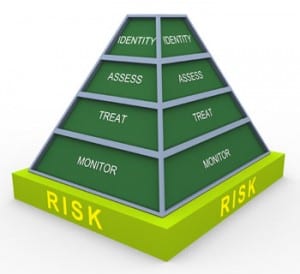 Occupational health and safety (OHS) is a popular topic but often a misunderstood one. It is frequently viewed in terms of providing health insurance, training employees in safety procedures, and maintaining a drug and alcohol testing program. However, Australian Standard AS/NZS 4801:2001 gives the definition of OHS as the “part of the overall management system which includes organisational structure, planning activities, responsibilities, practices, procedures…” Though it may be tempting to say, “Typical complex government overstatement,” the message for employers is that an effective health and safety program is an integrated process, meaning the Alcohol and Other Drug (AOD) policy and testing program should be an integral component of OHS. As a critical business process, the implication is that AOD programs require risk assessments just like other components of OHS systems. The first step is identifying the key factors that could lead to a culture of non-conformance with the AOD policies.
Occupational health and safety (OHS) is a popular topic but often a misunderstood one. It is frequently viewed in terms of providing health insurance, training employees in safety procedures, and maintaining a drug and alcohol testing program. However, Australian Standard AS/NZS 4801:2001 gives the definition of OHS as the “part of the overall management system which includes organisational structure, planning activities, responsibilities, practices, procedures…” Though it may be tempting to say, “Typical complex government overstatement,” the message for employers is that an effective health and safety program is an integrated process, meaning the Alcohol and Other Drug (AOD) policy and testing program should be an integral component of OHS. As a critical business process, the implication is that AOD programs require risk assessments just like other components of OHS systems. The first step is identifying the key factors that could lead to a culture of non-conformance with the AOD policies.
Assessments Guide Policies and Procedures
Safety assessments focus first on identifying situations or conditions that increase the likelihood of injury, death, or health problems. Some situations are obvious. For example, chemical fumes can lead to worker respiratory problems. Employees using potentially dangerous equipment are more likely to be injured. What is not so obvious is a department in which work scheduling practices raise the stress level, leading to higher rates of substance use – legal and illicit. Using alcohol or drugs in the workplace increases the risk of injury for the employee and the co-workers. Therefore, it is important that safety assessments consider more than the obvious risks associated with activities like driving, using heavy equipment, engineering and architectural designing, mining, and so on.
Employers have a duty under the Occupational Health & Safety Act 2004 to educate workers and establish an appropriate policy to protect employees. Failure to do so can lead to employee litigation.1 The AOD perspective must be included in the process to show duty of care and ensure risks are adequately assessed. For example, a sharp blade will obviously injure but has the department workload been assessed from a safety perspective? Some people who are asked to work a lot of overtime or routinely do intense work are more likely to turn to substances to overcome fatigue or relieve stress. Therefore, minimising substance use begins with revising workloads, followed by random alcohol and drug testing. The safety assessment will guide the policy direction and implemented procedures. For example, people doing a work function identified as having a high risk of injury or death may be subjected to more frequent testing whilst the employer maintains random selection within the department or amongst the designated safety sensitive positions.
Taking Ownership of Workplace Safety
There are key factors that can guide risk assessments. The Vic government’s Worksafe SafetyMAP is an audit tool that employers can use to self-evaluate the performance of their OHS systems. It involves everyone in the workplace to promote a continual improvement process. Though SafetyMAP is designed for the OHS system, its principles apply to the alcohol and drug testing process also. The more workers are involved in promoting and maintaining a substance free workplace, the more likely they are going to take ownership of the policy and support the drug testing or use of breathalysers as important tools in protecting worker health and welfare. The key factors, adapted to the AOD policy and procedures, include the following:2
- The likelihood that injury would occur should anyone use drugs or alcohol
- Current information about the types of hazards presented by various substances
- Identification of the people most competent to manage the AOD program, including educating and enforcing policies and procedures
- Process for consulting with workplace members to promote organisational-wide support
Documentation methods
Methods for ensuring ongoing compliance with OHS laws and regulations, standards, codes, industry best practices, etc.
Worksafe recommends turning to professionals or consultants with the right knowledge and technical expertise because they can help management look ahead rather than simply relying on counting past incidents and experiences. Overall, the message is that maintaining a substance free workplace is an ongoing process and not a periodic event. The key factors are guidelines for starting a journey to workplace wellness, health, and safety.
Mediscreen offers professional expertise in AOD testing Australia wide and has a range of workplace health and wellness options, including general worker health assessment. Using the Mediscreen approach leads to a drug and alcohol testing program that is integrated with the OHS system, giving employers the clear linkage between wellness and living substance free.
References
1 Choice Enterprises Australia PTY LTD. (2009, August 10). Choice Fire Protection. Retrieved from Drug & Alcohol Policy: http://bit.ly/1mBM4Hf
2WorkSafe – Victoria Government. (n.d.). WorkSafe. Retrieved from SafetyMAP: http://bit.ly/1psfOuK


